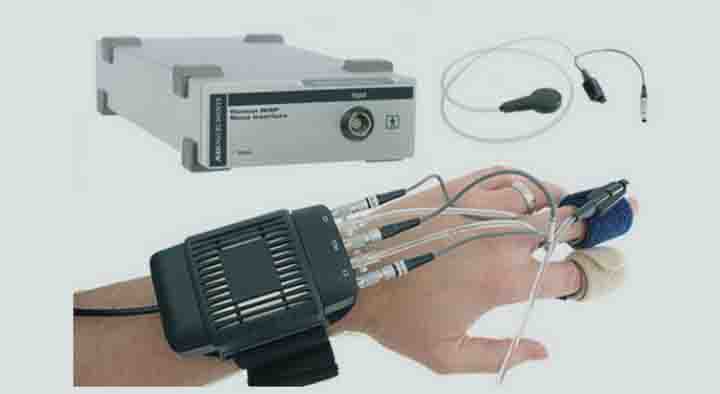NIBS Machine | Non-Invasive Blood Pressure:
Blood pressure measurement is a component of the heart monitor.
Patients under anesthesia should be measured at least every five minutes at the beginning of the procedure and during the procedure.
If the patient is restless, it is needed more often.
The automation of this work allows the anesthetist and nurse to perform other tasks while enabling the patient to observe as closely as possible.
Non-Invasive Blood Pressure (NIBS Machine) Monitor Guidance: –
Most automated instruments use a pendulum principle. Care should be taken to choose a suitable size cuff and tie it one inch above the elbow.
The most accurate blood pressure measured by NIBP Machine is average arterial blood pressure.
The most important determinant of the accuracy of the pressure is the width of the cuff. It should be 40% of the mid-circumference of the limb (the length should be twice the width).
When activated, the cough pressure almost increases. Systolic blood pressure above 50 mm Hg. Cuff pressure is gradually reduced to small portions. As the systolic pressure gets closer, small swings begin to appear under the pressure of the cuff.
The oscillations disappear under diastolic pressure. The maximum oscillation is observed in the average blood pressure. NIBS Machine may not be appropriate to use NIBS Machine more than once every three minutes. In such cases, aggressive observation is recommended.
Invasive Blood Pressure Monitoring – IBP
When it is necessary to monitor beat-to-beat blood pressure, such as inotropes and vasopressors are taken for hemodynamically unstable patients. Inter-arterial cannulation and pressure monitoring are preferred.
Invasive BP Site: –
- Radial artery
- Ulnar artery
- Dorsal pedis artery posterior tibial artery
- Peripheral pulse when the femoral artery is not felt
IBP Medical Technique
Typically, a 20 gauge cannula without an injection port is selected for radial and other peripheral arterial cannulation. The femoral artery is cannulated using an 18 or 16-gauge long catheter.
Radial artery cannulation
Cannulation should be performed under strict aseptic precautions. Gentle dilation of the wrist helps to make the radial artery more superficial and well visible. The radial artery is touched with the index finger of one hand and the cannula extends to the radial artery just below the skin under the finger.
A flashback of blood to the cannula hub is observed as it enters the artery. At this point, the sweetie is held in place (not withdrawn) and the cannula is gently threaded forward with the needle. IThistechnique prevents puncture of the posterior wall of the artery.
If the posterior wall is perforated, the sweetness is withdrawn and the cannula is slowly pulled back until a jet of blood flows through the hub. At this point, the cannula may return to the arteries. This technique should be performed quickly before hematoma and distortion of the arterial lumen results.
To avoid contamination of the table or armrest with blood, an empty 2 ml syringe can be attached to the cannula hub as it is withdrawn at slightly negative pressure.
The position of the arteries in the nostrils is indicated by the free flow of blood. The syringe and transducer are connected to the manometry tubing in the cannula, the transducer is emptied and observation begins. Normal arterial waves should be displayed.
IBP Monitoring Facility
The first advantage is that it allows continuous ‘beat-to-beat’ blood pressure monitoring. It is useful for patients who have a sudden change in blood pressure (such as vascular surgery), who need intensive blood pressure control (such as head injury patients), or who need to take medication to maintain their blood pressure.
The third benefit depends on the improvement of the patient’s well-being, especially for those who require long-term monitoring of blood pressure.
Other advantages include that the location of the intravascular volume can be inferred from the size of the arterial pressure, and a live arterial cannula for arterial blood gas is convenient for repeatedly taking arterial blood samples.
IBP Medical Complications
Accidental injection of drugs: – No drug should be injected into the arterial line as inflammation may cause convulsions in the arteries. To avoid this, the cannula should not have a built-in injection port for arterial cannulation. The 3-way tap must cover the manometry line and the line must be properly labeled.
Discharge: – Accidental disconnection of the unseen artery line can lead to bleeding, especially fast from the femoral artery (damage can be up to 500 ml/min!).
Infections: Any permanent vascular catheter can be a source of infection when poorly maintained and left in a state for a long time. However, the rate of infection is lower than in the central venous line.
Organ Ischemia: Due to the parallel presence and structure of the cannulated vessel cannot usually be distant ischemia. Therefore, physicians often perform parallel tests using Allen’s test before cannulation.
For example, to test for parallel catheterization in a radial artery, both the ulnar and the radial artery are compressed until the organ is pale.
You May Also Like: What is Adderall and How It Works

